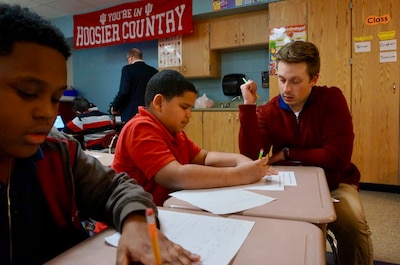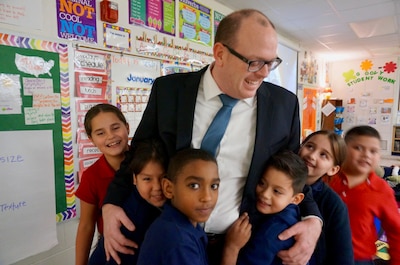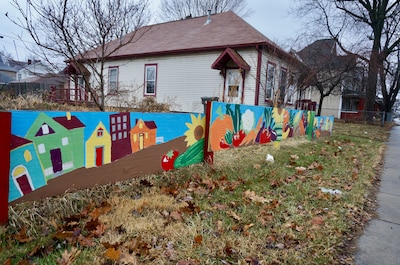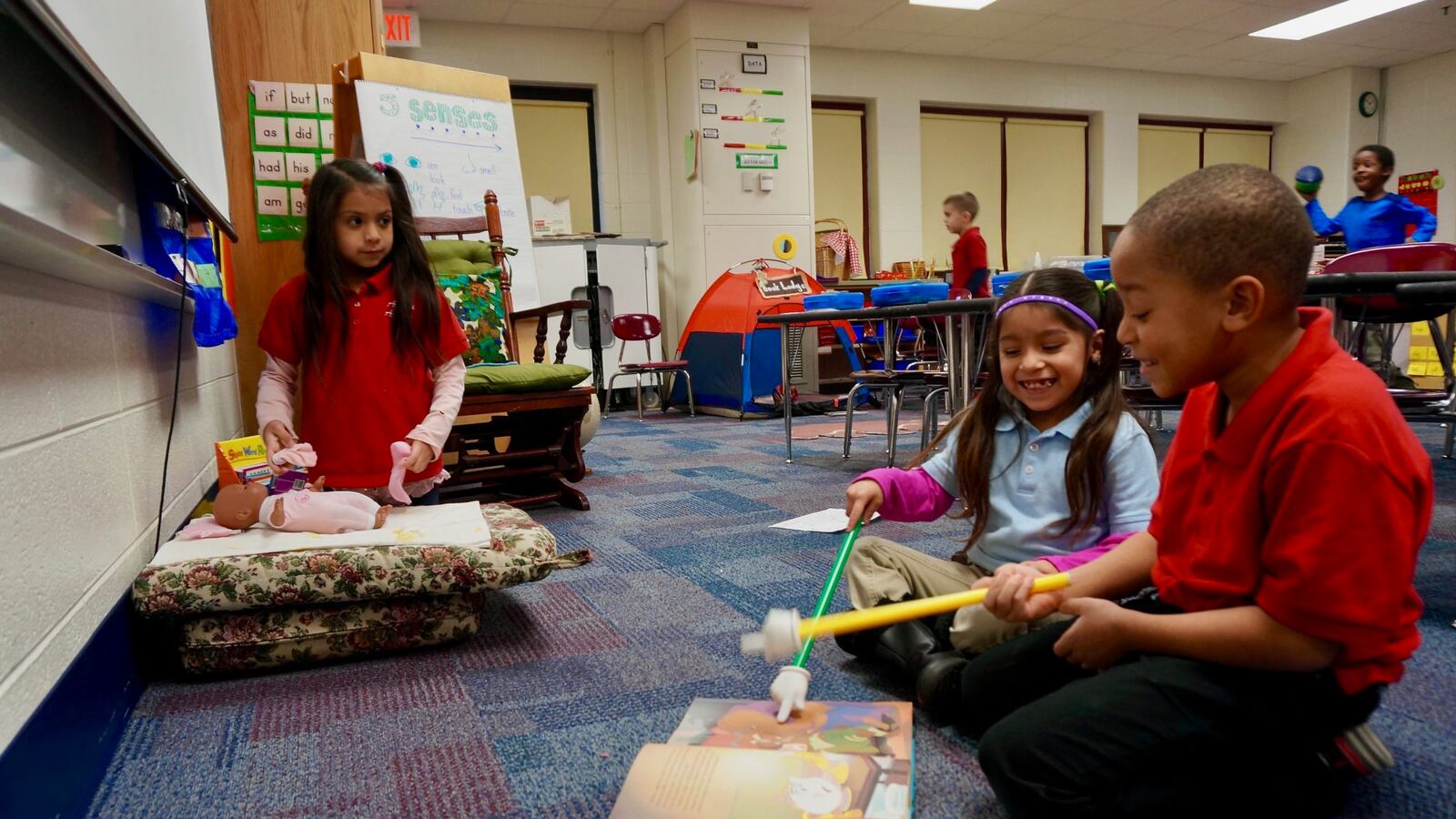Residents on the near east side of Indianapolis have worked hundreds of hours, held dozens of meetings and spent over $100,000 in the last year on an ambitious project: Planning a new future for their struggling neighborhood school.
Now, leaders are on the cusp of finding out whether their plan will be approved by the Indianapolis Public Schools board. If it wins support, it could be the first neighborhood-led effort to create an IPS innovation school, offering a model for other community groups across the city.

Neighbors who have a stake in the success of School 15 would have control, said James Taylor, CEO of the John Boner Neighborhood Centers, which is one of the community groups behind the plan.
“That really creates a different kind of context when you are making decisions in terms of staffing, in terms of the structure of the school,” he said. “There is a direct accountability that we all hold.”
Their vision for the school includes new staff, a longer year and more support for struggling families. But at its core, the planners are looking to create a traditional, thriving neighborhood school, where families can walk and parents play an essential role.
School 15 has lots of challenges. Last year, 32 percent of students were learning English and 87 percent were poor enough to get subsidized meals. Many families at the school have unstable housing, so students leave and new kids enroll throughout the year. The school has struggled academically for years, and it received an F from the state in 2016.
Community leaders are betting, however, that they can turn the school around by improving academics, making life more stable for current families and drawing in neighborhood parents who are choosing other schools.
If the proposal to convert School 15 to an innovation school is approved, it would be led by Principal Ross Pippin, a long-time teacher who took the helm last spring. But it would be overseen by a new nonprofit that would make decisions on everything from spending to the calendar and curriculum. The nonprofit would also employ most of the teachers, who would not be part of the district union.
“You get ultra-local control of your school, and so you can really be responsive to every detail of your school,” Pippin said. “That’s really to me the biggest excitement about innovation schools.”

Innovation schools have most of the independence of charter schools but they are still considered part of the district. Since the Indiana legislature created innovation schools three years ago, the district has converted a handful of schools to innovation status. But most of those are managed by outside charter operators. School 15 would be the first innovation school planned by local leaders — notably from the Boner Center and Englewood Christian Church, which is active in community development.
One reason Taylor and others embraced the idea of creating their own innovation school was precisely to avoid a school “restart” led by an outside manager. School 15 has grappled with low test scores for several years — even landing on a federal warning list over a decade ago — and as IPS moves to radically overhaul failing schools, its future is uncertain, Taylor said.
“A lot of the most strongly pro (traditional) public school advocates that we have in our neighborhood are the ones that are driving this planning on the innovation school because they knew change was coming,” Taylor said. “Either we lead and help guide and help shape what that change is going to look like or it’s going to happen to us.”
Their plan for improving the long-struggling school includes extending the school day, creating new blocks of time for teachers to collaborate and adding a second educator to many classrooms. There will also be on-site staff from the Boner Center — the community center already provides services to many families in the area — who will help parents with challenges like finding jobs or getting stable housing.
Shiwanda Brown, a member of the nonprofit board, said that she hopes a neighborhood innovation school will attract staff who are more committed and that there is less teacher and principal turnover. Brown sent two daughters to School 15, her youngest finished last year, and she said keeping staff has been on ongoing challenge.
“(We want to) make sure the teachers that come on board are … there because they want to be there — they are there because they love to do what they are doing,” Brown said.
Creating a community-led school is a steep challenge. Over the past year, the group has spent hundreds of hours and about $100,000 in grant funding on forming a nonprofit, applying for federal funding and reaching out to families, Taylor said. But the near eastside neighborhood around School 15 is unusually well prepared for this kind of work, and several leaders involved with the effort were already working together on plans to revitalize the neighborhood.

It’s also a diverse community, with many stable, middle-class families that could help School 15 thrive. But as it stands, those parents often aren’t choosing their neighborhood school, instead opting for magnet or charter schools. The hope is that as an innovation school, it will be able to attract some of those families.
Taylor said that School 15 will be a “much healthier” school regardless of whether it is able to attract those families. But the aim is to create a school that is so successful that all kinds of families want to enroll.
“Our belief is that if we do our work well and if we do it right, those issues will take care of themselves,” he said.
The proposal for School 15 is already attracting interest from local parents — and sparking conversation.
Principal Pippin, who become involved when leaders were first fleshing out the idea of a neighborhood-run school, said that parents who don’t currently have kids at the school have been contacting them to learn about the proposal and stopping by for tours.
“For some reason, they didn’t think Thomas Gregg (School 15) was an option, but they see innovation as suddenly, now the school becomes an option for their family,” Pippin said. “The neighborhood’s excitement about the potential has really been not just surprising but exciting to me.”

April Adams, a teacher who lives in the neighborhood and worships at Englewood Christian Church, said that fellow congregants have started to ask for advice on whether to choose School 15. Although they are interested, they are also afraid that there might be better options for their children.
But Adams, who is pregnant, said that she and her husband are already planning on sending their children to School 15. She also hopes to work at the school eventually.
“It can’t just be one type of family that’s going to School 15,” Adams said. “If we are going to make this a community school, then the community needs to be invested.”

